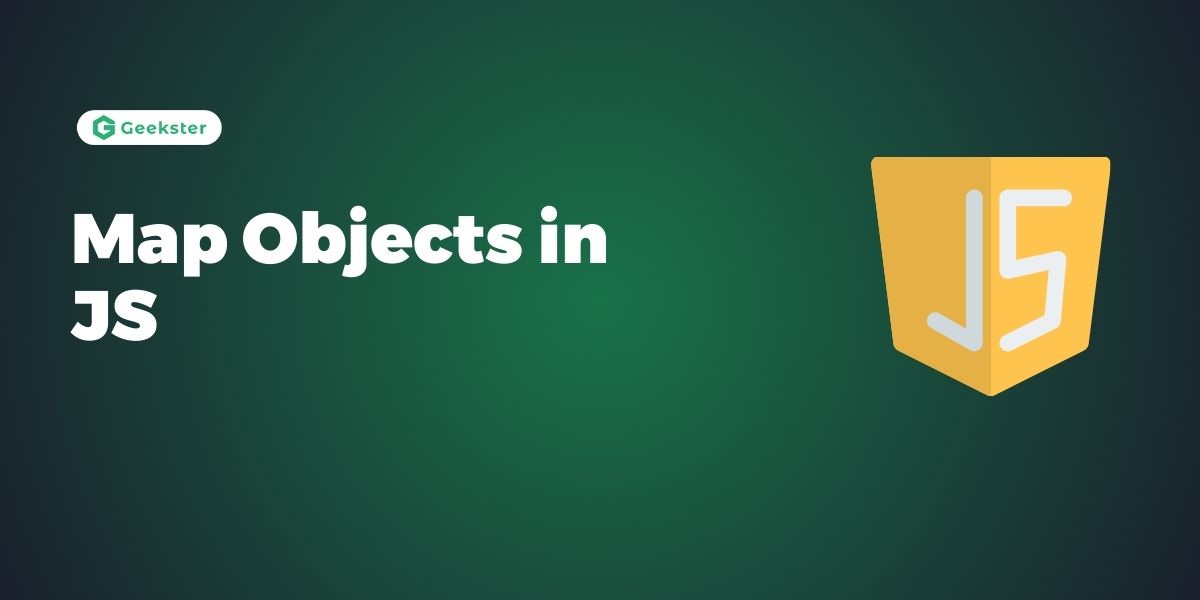Introduction
A Map object is a collection of key-value pairs where both keys and values can be of any data type. Unlike objects, which use strings as keys, a Map can use any value, including functions, objects, and primitives, as keys.In modern JavaScript, managing collections of data is a common task. While arrays are often used for simple lists, they may not always be the most efficient or flexible choice for more complex collections. This is where JavaScript’s Map object comes into play. The Map object is a powerful and flexible tool for storing key-value pairs, and it provides various methods and properties for manipulating these pairs efficiently.
Creating a map
For creating a new Map , we can simply represent it using the Map constructor
let map = new Map();We can also initialize a Map with an array of key-value pairs:
let map = new Map([
['key1', 'value1'],
['key2', 'value2']
]);Basic Operations
Adding Elements
For adding elements to a Map, we use the set method:
map.set('key1', 'value1');
map.set('key2', 'value2');Accessing Elements
We can access elements in a Map using the get method
console.log(map.get('key1')); // Output: 'value1'Checking for Keys
If we want to check if a Map contains a specific key, use the has mehtod
console.log(map.has('key1')); // Output: true
console.log(map.has('key3')); // Output: falseDeleting Elements
To delete an element from a Map, use the delete method:
map.delete('key1');
console.log(map.has('key1')); // Output: falseClearing the Map
To remove all elements from a Map, use the clear method:
map.clear();
console.log(map.size); // Output: 0Iterating over a Map
Maps maintain the order of insertion, allowing for predictable iteration. You can use various methods to iterate over the elements of a Map:
Using for...of
for (let [key, value] of map) {
console.log(`${key}: ${value}`);
}Using forEach
map.forEach((value, key) => {
console.log(`${key}: ${value}`);
});Iterating Keys and Values Separately
You can iterate over just the keys or values of a Map using keys and values methods, respectively:
for (let key of map.keys()) {
console.log(key);
}
for (let value of map.values()) {
console.log(value);
}Map vs Object
While both Map and Object can be used to store key-value pairs, Map offers several advantages:
Key Flexibility: Map allows any value (including functions, objects, and other Maps) as keys.
Order of Elements: Map maintains the insertion order of keys, whereas the order of keys in an Object is not guaranteed.
Size Property: Map has a size property that returns the number of key-value pairs, whereas the size of an Object must be determined manually.
Iteration: Map provides more convenient and consistent methods for iteration.
Advanced Usage
Using Objects and Functions as Keys
One of the main powers of the Map is in its ability to use objects and functions as keys:
let objKey = {};
let funcKey = function() {};
map.set(objKey, 'value associated with object');
map.set(funcKey, 'value associated with function');
console.log(map.get(objKey)); // Output: 'value associated with object'
console.log(map.get(funcKey)); // Output: 'value associated with function'Cloning and Merging Maps
You can clone a Map by using the new Map constructor with an existing Map as an argument:
let originalMap = new Map([
['key1', 'value1'],
['key2', 'value2']
]);
let cloneMap = new Map(originalMap);
console.log(cloneMap.get('key1')); // Output: 'value1'To merge multiple Map objects, you can use the spread operator:
let firstMap = new Map([
['key1', 'value1']
]);
let secondMap = new Map([
['key2', 'value2']
]);
let mergedMap = new Map([...firstMap, ...secondMap]);
console.log(mergedMap.size); // Output: 2Conclusion
The JavaScript Map object is a flexible and performant facility used for managing collections of key/value pairs. Being able to use any data type as keys, maintain the insertion order, and provide a variety of methods for manipulation makes it more favorable than the traditional objects in many use cases. Lack of knowledge or effective utilization of the capabilities of Map may eventually result in a loss of opportunities.
Frequently Asked Questions
Map in JavaScript? A Map in JavaScript is a collection of key-value pairs. Here, both keys and values can be of any data type. It provides methods to add, retrieve, delete, and check the presence of items while keeping up with the insertion order.
Map differ from an Object? While the purpose of both Map and Object is the same, a Map does offer a little more flexibility in working with the key-value pairs:
A Map can have keys of any type, while an Object should only have a string as an object key.
An inserted key maintains its order of insertion, making for predictable iteration.
A built-in property of a Map is ‘size’, which makes getting the size of the map quite easy.
Iteration over a Map can be done easily with methods like forEach, keys, values, and entries.
Map? The size of a Map can be checked using its size property, which returns the number of key-value pairs in the Map.

